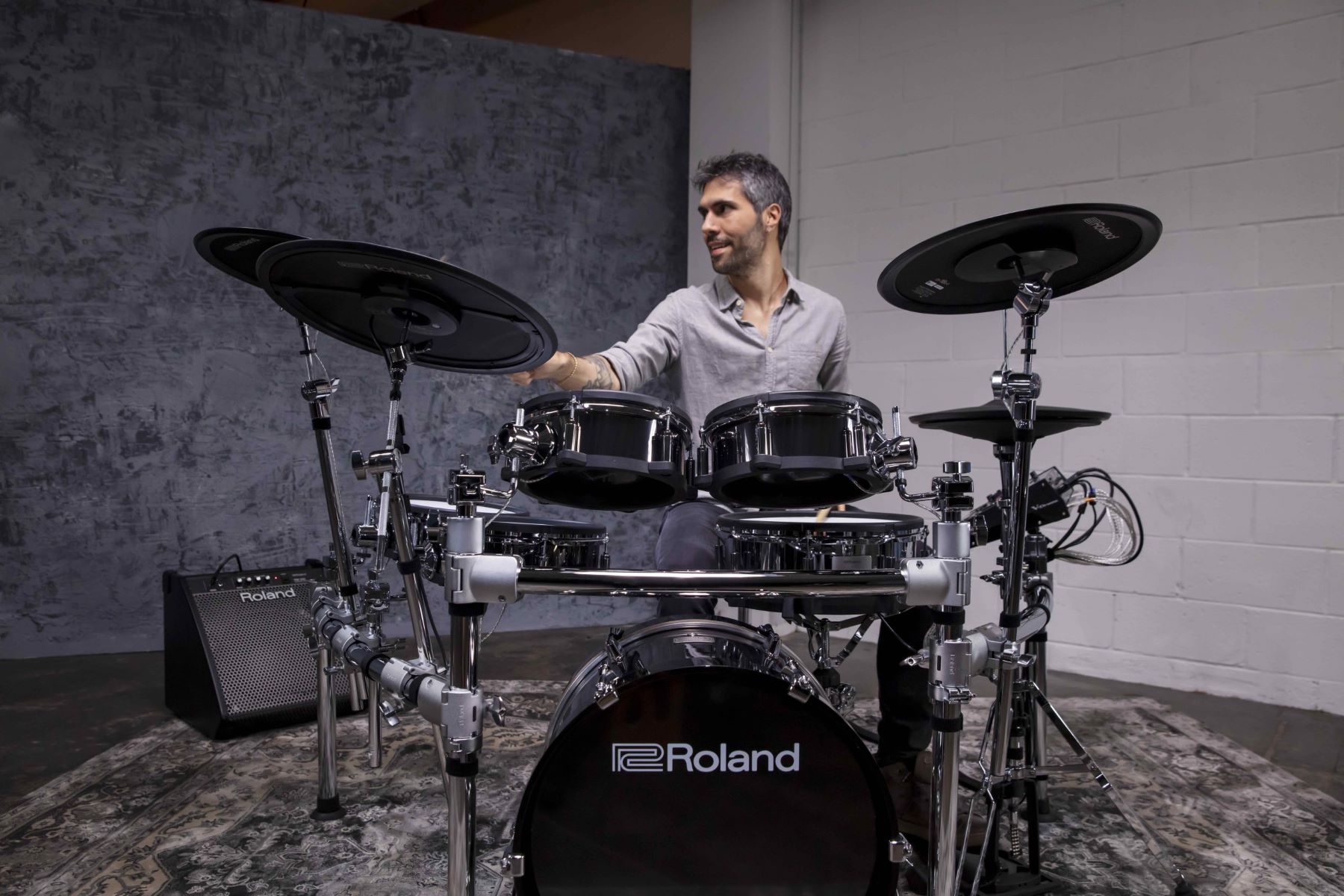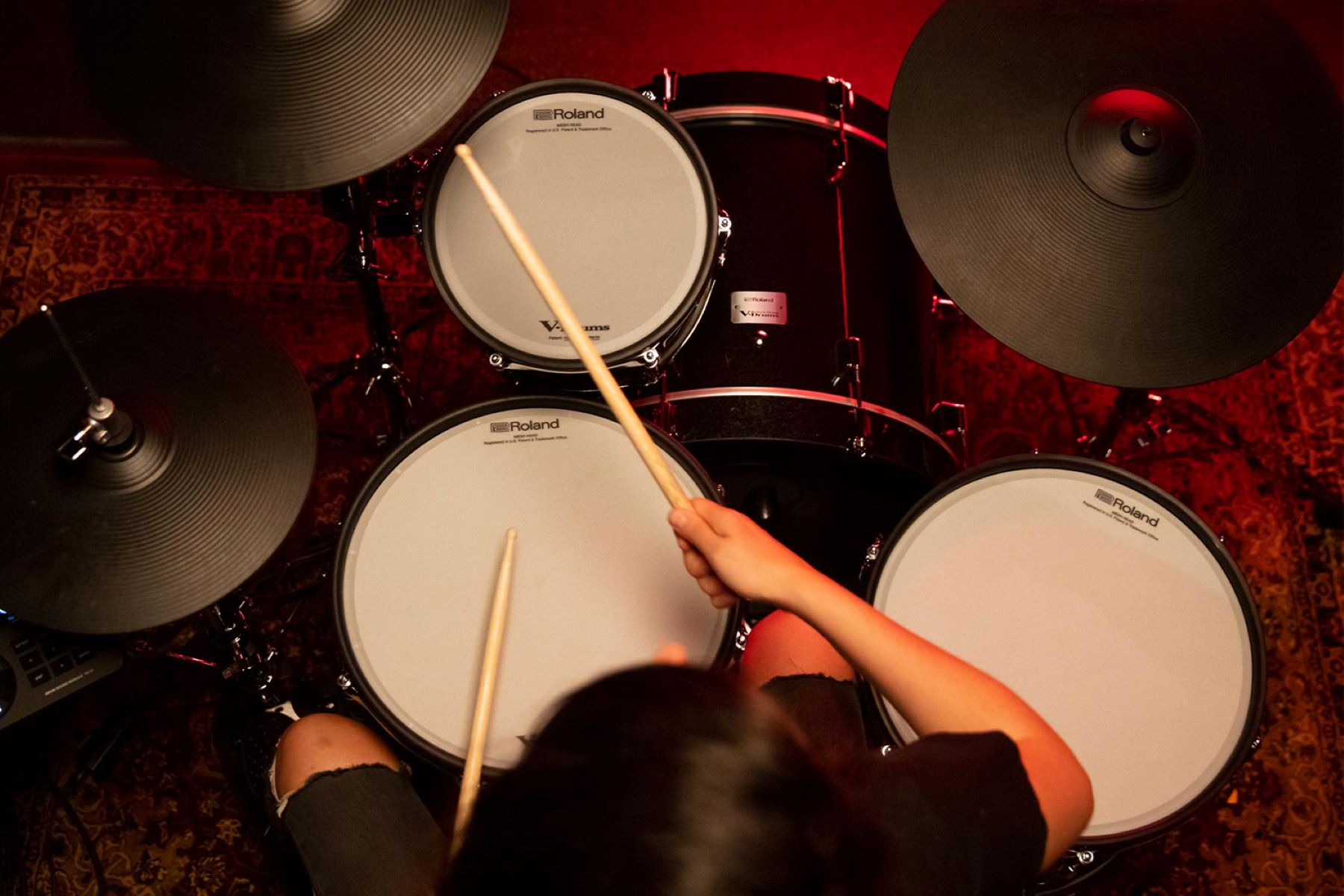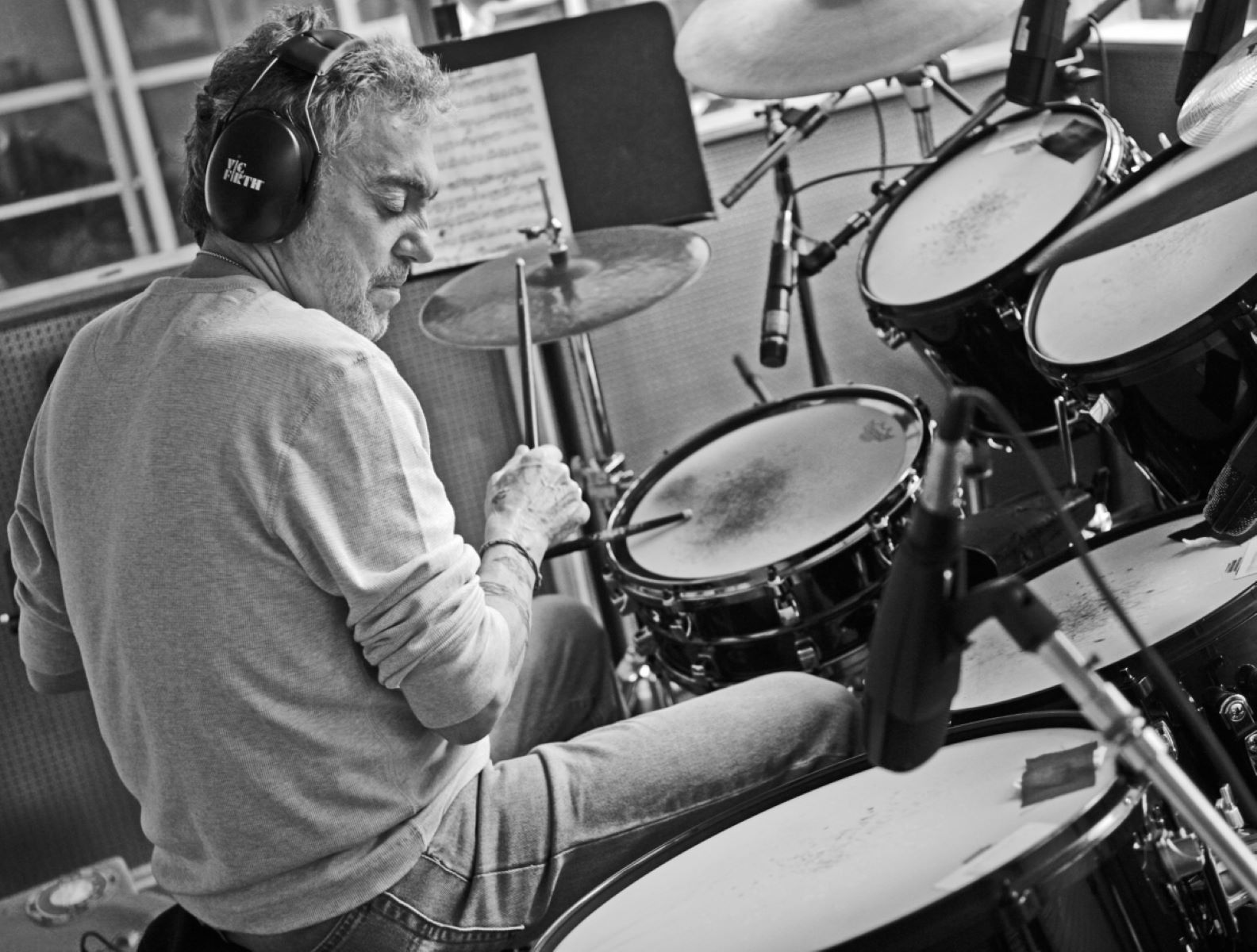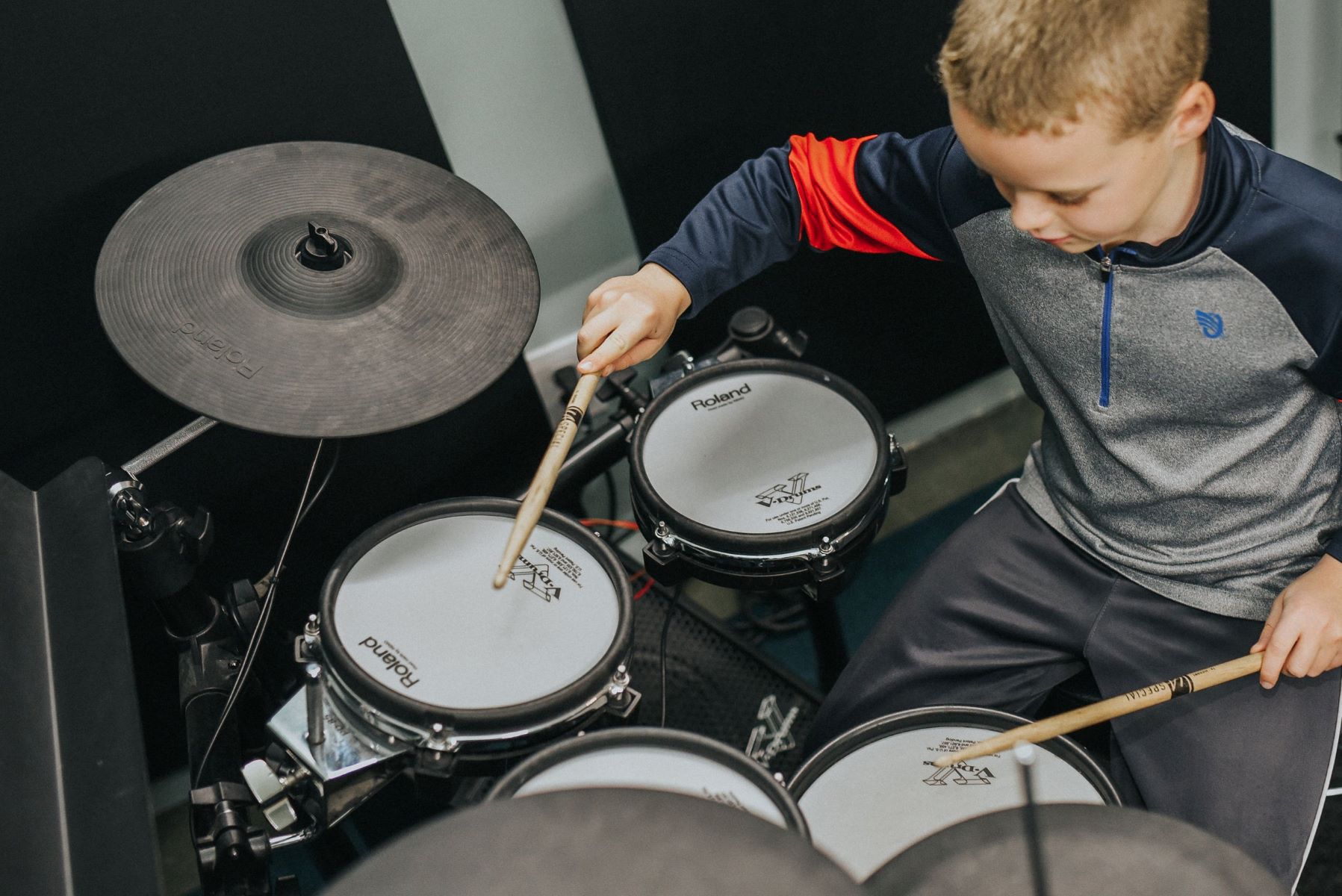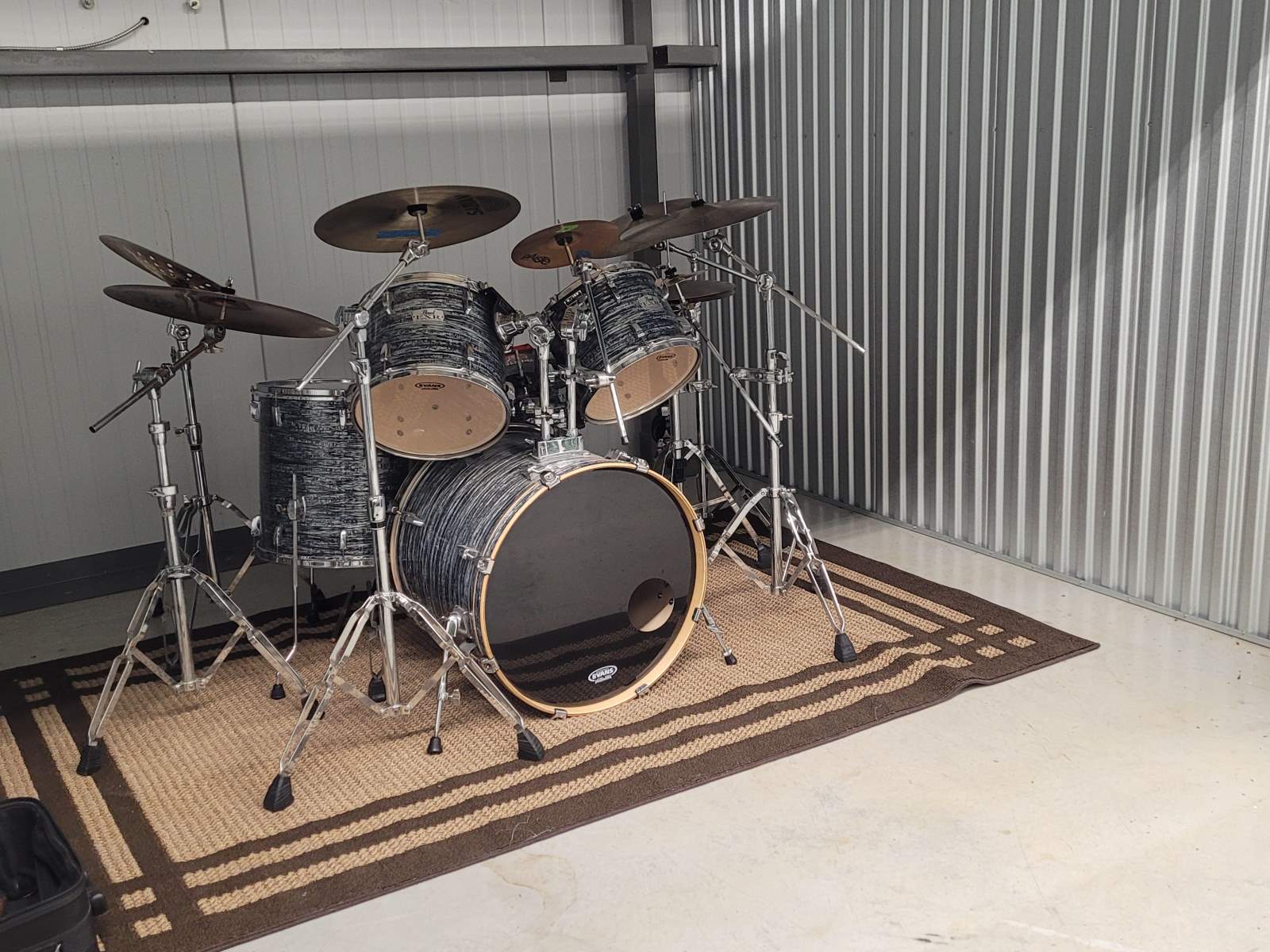Home>Instruments>Drums>How To Play Steel Drums


Drums
How To Play Steel Drums
Published: February 8, 2024
Learn how to play steel drums with our comprehensive guide. Discover the techniques and rhythms to master the art of drumming. Start your drumming journey today!
(Many of the links in this article redirect to a specific reviewed product. Your purchase of these products through affiliate links helps to generate commission for AudioLover.com, at no extra cost. Learn more)
Table of Contents
Introduction
Steel drums, also known as steel pans, are a fascinating and vibrant musical instrument with roots in the Caribbean. These unique percussion instruments produce captivating melodies that evoke the spirit of the islands, making them a popular choice for musicians and enthusiasts worldwide. Whether you're a seasoned musician or a curious beginner, learning how to play steel drums can be a rewarding and enjoyable experience.
The history of steel drums is as rich and diverse as the melodies they produce. Originating in Trinidad and Tobago, steel drums have a fascinating evolution, stemming from the innovative use of discarded oil barrels by early Caribbean communities. Over time, these simple containers were transformed into finely tuned instruments capable of producing a wide range of musical tones and rhythms.
Playing steel drums is not only a musical endeavor but also a cultural journey, offering a glimpse into the vibrant traditions and celebrations of the Caribbean. The infectious rhythms and melodies of steel drum music have the power to transport listeners to sun-kissed beaches and colorful carnivals, making it a truly immersive and joyful experience.
In this comprehensive guide, we will delve into the art of playing steel drums, exploring everything from understanding the instrument and choosing the right steel drum to mastering striking techniques, scales, and melodies. Whether you're drawn to the rhythmic pulse of calypso, the soul-stirring sounds of reggae, or the lively beats of soca, this guide will equip you with the knowledge and skills to embark on your steel drum playing journey.
Join us as we uncover the secrets of this captivating instrument, and let the vibrant melodies of the steel drums ignite your passion for music and culture. Whether you're dreaming of performing in a steel drum band or simply seeking a new musical adventure, the world of steel drums welcomes you with open arms. Let's embark on this rhythmic odyssey together and discover the enchanting world of steel drum music.
Understanding Steel Drums
Steel drums are percussion instruments crafted from metal barrels or similar containers. The process of creating a steel drum involves carefully shaping the metal to form a concave playing surface divided into distinct musical notes. These notes are meticulously tuned to produce a harmonious and melodious sound when struck with specialized mallets or drumsticks.
One of the most intriguing aspects of steel drums is their versatility. These instruments are available in various sizes and configurations, each contributing unique tonal qualities to the overall sound. From the high-pitched shimmer of a lead pan to the deep, resonant tones of a bass pan, steel drums offer a diverse range of musical expression.
Understanding the anatomy of a steel drum is essential for aspiring players. The playing surface, also known as the “pan,” is divided into individual sections called “pitches” or “notes.” Each note is carefully crafted to produce a specific musical tone when struck. The arrangement of notes on the pan varies depending on the type of steel drum, with some featuring chromatic scales and others designed for diatonic scales.
Additionally, the construction of a steel drum involves intricate processes such as sinking, grooving, and tuning. Skilled artisans use specialized tools and techniques to shape the playing surface, create grooves for each note, and fine-tune the instrument to achieve optimal sound quality. The craftsmanship and precision involved in making steel drums contribute to their exceptional musical capabilities.
Steel drums are also deeply intertwined with the cultural heritage of Trinidad and Tobago, where they originated. The instrument’s evolution is closely linked to the island’s rich traditions and vibrant festivals, such as Carnival. As a result, playing steel drums is not just about creating music; it’s a celebration of Caribbean culture and a testament to the ingenuity of its people.
With their captivating sound and cultural significance, steel drums continue to captivate audiences and musicians around the world. Whether you’re drawn to their infectious rhythms or fascinated by their unique construction, delving into the world of steel drums promises a truly enriching and immersive musical experience.
Choosing the Right Steel Drum
When embarking on your steel drum playing journey, selecting the right instrument is crucial to achieving the desired sound and musical expression. Several key factors should be considered when choosing a steel drum, including the type of music you intend to play, your skill level, and your budget.
One of the primary considerations when selecting a steel drum is the instrument’s range and configuration. Steel drums are available in various types, each offering distinct tonal characteristics. The lead pan, for example, is renowned for its bright and melodious sound, making it ideal for playing melodies and carrying the main musical themes. On the other hand, the baritone and alto pans contribute mid-range tones that add depth and richness to steel drum ensembles. Additionally, the bass pan produces deep, resonant notes that provide a solid foundation for the music.
For beginners and intermediate players, a single lead pan or a multi-tenor steel drum may be a suitable choice, offering versatility and ease of play. More advanced players or those aiming to perform in steel drum bands may opt for larger ensembles featuring multiple pans, including baritone, double tenor, and bass drums. Understanding the role of each steel drum type and its contribution to the overall sound is essential for creating cohesive and harmonious musical arrangements.
Another crucial aspect to consider is the scale of the steel drum. Some instruments are designed with diatonic scales, which are well-suited for playing traditional folk and calypso music. Others feature chromatic scales, providing access to a wider range of notes and enabling the performance of complex melodies and arrangements. The choice between diatonic and chromatic steel drums depends on your musical preferences and the genres you wish to explore.
Furthermore, the quality of craftsmanship and tuning should not be overlooked when choosing a steel drum. Seek instruments crafted by experienced artisans known for their attention to detail and precision tuning. A well-tuned steel drum will produce clear, resonant tones across all notes, ensuring a satisfying playing experience and optimal musical expression.
Finally, consider your budget and long-term musical goals when selecting a steel drum. While high-quality instruments come with a higher price tag, they offer superior sound and durability. Investing in a reputable steel drum from a trusted maker can enhance your playing experience and set the stage for musical growth and exploration.
By carefully evaluating these factors and considering your musical aspirations, you can confidently choose a steel drum that resonates with your unique style and sets the stage for a fulfilling musical journey.
Holding and Striking Techniques
Mastering proper holding and striking techniques is essential for achieving optimal sound and control when playing steel drums. Whether you’re a novice or an experienced musician, honing these fundamental skills will elevate your performance and musical expression.
When holding a steel drum, it’s important to maintain a relaxed and comfortable posture. The instrument should rest securely on a stand or your lap, allowing for easy access to all notes and ensuring stability during play. For handheld steel drums, such as the lead pan, a comfortable grip that provides stability without impeding movement is key. Proper posture and hand positioning contribute to fluid and effortless play, enabling you to navigate the instrument with precision and ease.
Striking techniques vary depending on the type of steel drum and the desired musical effect. The use of specialized mallets or drumsticks tailored to the instrument’s size and tonal range is crucial for producing clear, resonant tones. When striking the notes, aim for a consistent and controlled approach, allowing the mallet to rebound naturally to achieve optimal sound quality. Experiment with different striking angles and velocities to discover the nuances of each note and develop a nuanced playing style.
For multi-drum ensembles, such as steel drum bands, coordination and synchronization among players are paramount. Each musician must master their striking techniques while maintaining awareness of the ensemble’s overall sound. Cohesive play and rhythmic precision are achieved through dedicated practice and a deep understanding of each player’s role within the ensemble.
Furthermore, exploring the use of dynamics and articulation can greatly enhance the expressiveness of steel drum music. Varying the intensity and speed of strikes, as well as incorporating techniques such as rolls and accents, adds depth and emotion to your performance. By infusing your playing with dynamic contrasts and subtle articulations, you can create captivating musical interpretations that resonate with listeners.
Continuous practice and experimentation with holding and striking techniques are essential for developing a personal playing style and achieving mastery of the instrument. As you delve into the world of steel drums, embrace the journey of discovery and refinement, allowing your unique musical voice to emerge through dedicated practice and creative exploration.
Basic Steel Drum Scales
Understanding basic steel drum scales is fundamental for navigating the instrument’s musical landscape and creating harmonious melodies. The arrangement of notes on a steel drum follows specific scales, each offering a distinct palette of musical possibilities. Whether you’re exploring traditional calypso tunes or venturing into contemporary genres, mastering basic scales forms the foundation of your steel drum proficiency.
One of the most common scales found in steel drums is the diatonic scale, which consists of seven notes within an octave. This scale is prevalent in folk and traditional Caribbean music, providing a bright and uplifting tonal framework for melodies and arrangements. The diatonic scale’s straightforward structure makes it accessible to beginners, offering a starting point for exploring simple tunes and building musical confidence.
As you progress in your steel drum journey, delving into chromatic scales expands your musical horizons and unlocks a broader range of notes and intervals. Chromatic scales encompass all twelve tones within an octave, including both natural and sharped/flatted notes. This expanded tonal palette enables the performance of intricate melodies, chromatic passages, and diverse musical styles, making it a valuable asset for advanced steel drum players.
Mastering basic scales involves familiarizing yourself with the layout of notes on the steel drum and developing muscle memory for navigating the instrument’s range. Practice scales in ascending and descending patterns, paying attention to the intervals between notes and striving for clarity and precision in your playing. Additionally, explore scale exercises that incorporate rhythmic variations and articulation, enhancing your command of the instrument’s tonal diversity and expressive potential.
Understanding the relationship between scales and chords is also integral to steel drum proficiency. By grasping the harmonic implications of different scales and their corresponding chords, you can create compelling chordal accompaniments and melodic improvisations, enriching your musical interpretations and compositions.
Embrace the exploration of basic steel drum scales as a gateway to musical creativity and expression. Whether you’re captivated by the infectious rhythms of Caribbean music or drawn to the versatility of steel drums in contemporary genres, the mastery of scales lays the groundwork for your musical journey, empowering you to craft captivating melodies and immerse yourself in the vibrant world of steel drum music.
Playing Simple Melodies
Embarking on the journey of playing simple melodies on the steel drum is an exhilarating step toward musical expression and creativity. Whether you’re drawn to traditional calypso tunes, popular folk melodies, or contemporary compositions, mastering the art of playing simple melodies lays the groundwork for your steel drum proficiency and musical exploration.
Begin by selecting a familiar and melodically straightforward song to practice on the steel drum. Familiarizing yourself with the melody outside of the instrument allows you to internalize the tune’s contours and phrasing, facilitating a smoother transition to playing it on the steel drum. As you approach the instrument, visualize the layout of notes and identify the starting pitch of the melody within the steel drum’s range.
Once you’ve identified the starting note, proceed to play the melody in a deliberate and focused manner, ensuring clarity and precision in each note. Pay attention to the rhythm and timing of the melody, aligning your playing with the song’s natural flow and musical pulse. Experiment with variations in dynamics and articulation, infusing the melody with subtle nuances and expressive touches that reflect your musical interpretation.
As you gain confidence in playing simple melodies, consider exploring harmonization and chordal accompaniment to enrich your musical arrangements. Understanding the harmonic context of the melody enables you to incorporate supporting chords and harmonies, expanding the depth and complexity of your steel drum performance.
Furthermore, don’t hesitate to infuse your playing with personal flair and improvisational elements. Embrace the freedom to embellish the melody with tasteful ornamentations, rhythmic variations, and melodic embellishments, allowing your unique musical voice to shine through. This creative exploration enhances the character and individuality of your interpretations, captivating listeners and infusing the melody with your artistic sensibilities.
Playing simple melodies on the steel drum is a gateway to musical storytelling and emotional expression. Whether you’re sharing familiar tunes with an audience or crafting original arrangements, the art of melody playing on the steel drum invites you to immerse yourself in the enchanting world of music, where every note resonates with the joy of musical discovery and creativity.
Advanced Techniques and Styles
As your proficiency with the steel drum grows, delving into advanced techniques and exploring diverse musical styles opens up a world of creative possibilities and expressive depth. From intricate rhythmic patterns to genre-spanning musical interpretations, mastering advanced techniques and styles on the steel drum elevates your playing to new heights of musical artistry.
One of the hallmarks of advanced steel drum playing is the mastery of polyrhythms and complex rhythmic structures. Embracing polyrhythmic patterns allows you to layer multiple rhythmic elements within your playing, creating captivating and dynamic sonic textures. Whether you’re navigating syncopated grooves, intricate cross-rhythms, or polyrhythmic ostinatos, the command of rhythmic complexity adds depth and sophistication to your musical performances.
Exploring diverse musical styles broadens your artistic horizons and enriches your musical vocabulary. From the infectious pulse of calypso and soca to the soulful expressions of reggae and the vibrant energy of Latin jazz, each style presents unique challenges and opportunities for creative expression. Immersing yourself in various musical genres nurtures adaptability and versatility, enabling you to authentically interpret a wide range of musical traditions and compositions.
Advanced steel drum techniques also encompass the art of improvisation, offering a platform for spontaneous musical expression and creative dialogue. Whether engaging in solo improvisation or collaborative improvisational exchanges within an ensemble, improvisation fosters musical spontaneity and individuality. Embrace the freedom to explore melodic variations, rhythmic embellishments, and harmonic innovations, allowing your improvisations to reflect your artistic sensibilities and musical intuition.
Furthermore, the integration of extended playing techniques, such as mallet dampening, pitch bending, and timbral manipulation, expands the sonic palette of the steel drum, enhancing your expressive range and sonic versatility. Experimenting with these techniques adds depth and nuance to your playing, inviting you to push the boundaries of traditional steel drum performance and create innovative sonic textures.
Ultimately, the pursuit of advanced techniques and styles on the steel drum is a journey of artistic growth and creative exploration. Embrace the challenges and rewards of mastering polyrhythms, navigating diverse musical genres, and engaging in spontaneous improvisation, allowing your steel drum playing to evolve into a captivating and deeply expressive musical art form.
Maintenance and Care Tips
Proper maintenance and care are essential for preserving the integrity and sound quality of your steel drum. By incorporating regular maintenance practices into your routine, you can ensure that the instrument remains in optimal condition and continues to deliver exceptional musical performance for years to come.
One of the fundamental aspects of steel drum maintenance is keeping the instrument clean and free of debris. After each playing session, gently wipe the playing surface and the entire instrument with a soft, dry cloth to remove any dust, moisture, or residue. This simple practice helps prevent the buildup of foreign particles that could affect the instrument’s tuning and sound quality.
Additionally, it’s important to store the steel drum in a suitable environment to protect it from environmental factors that could compromise its structural integrity. Avoid exposing the instrument to extreme temperatures, high humidity, or direct sunlight, as these conditions can warp the metal and impact the tuning of the notes. Ideally, store the steel drum in a cool, dry place, away from direct heat sources and fluctuations in temperature.
Regular tuning is a crucial aspect of steel drum maintenance, especially for instruments that are frequently played or transported. Over time, the tuning of the notes may shift due to the metal’s natural properties and the impact of playing. If you notice any notes that sound off-pitch or out of tune, seek the expertise of a professional steel drum tuner to restore the instrument’s optimal tonal quality.
When transporting the steel drum, whether for rehearsals, performances, or storage, take care to handle the instrument with caution and use protective cases or covers to shield it from potential damage. Secure the instrument in a stable position during transport to minimize the risk of physical impact or jostling that could affect its tuning and structural integrity.
Regular inspections of the instrument’s structural components, such as the stand, frame, and mallet holders, are essential for identifying any signs of wear, corrosion, or instability. Addressing these issues promptly can prevent further damage and ensure the safety and stability of the steel drum during play.
By incorporating these maintenance and care tips into your steel drum routine, you can safeguard the instrument’s longevity and performance, allowing you to continue creating captivating music and embracing the rich traditions of steel drum playing.
Conclusion
Embarking on the journey of learning and mastering the steel drum is a vibrant and enriching experience that transcends musical boundaries and celebrates the cultural heritage of the Caribbean. From understanding the instrument’s origins to exploring advanced playing techniques and diverse musical styles, the world of steel drum music offers a captivating odyssey of rhythm, melody, and artistic expression.
As you immerse yourself in the enchanting world of steel drums, remember that the instrument’s allure lies not only in its melodious resonance but also in its ability to evoke the spirit of celebration, unity, and joy. Whether you’re drawn to the infectious rhythms of calypso, the soul-stirring melodies of reggae, or the vibrant energy of Latin jazz, the steel drum invites you to embark on a musical adventure that transcends borders and resonates with the universal language of music.
Throughout your journey, embrace the nuances of steel drum playing, from mastering basic scales and striking techniques to exploring advanced rhythmic patterns and improvisational prowess. Each step of the way, allow your musical voice to emerge, infusing your playing with personal flair, creativity, and emotional depth.
Furthermore, remember that the care and maintenance of your steel drum are essential for preserving its integrity and ensuring its longevity. By incorporating regular maintenance practices and protective measures, you can safeguard the instrument’s exceptional sound quality and structural stability, allowing it to remain a steadfast companion on your musical voyage.
Whether you’re a seasoned musician seeking new horizons or a curious beginner captivated by the allure of the steel drum, this instrument welcomes you with open arms, inviting you to explore its boundless musical potential and cultural significance. Let the vibrant melodies of the steel drums ignite your passion for music and culture, and may your journey be filled with rhythmic enchantment, creative discovery, and the timeless joy of musical expression.
As you continue to explore the captivating world of steel drum music, remember that your unique musical voice and artistic interpretation contribute to the rich tapestry of this timeless tradition. Embrace the rhythmic pulse of the steel drum, and let its melodies carry you to new heights of musical expression and cultural celebration.



